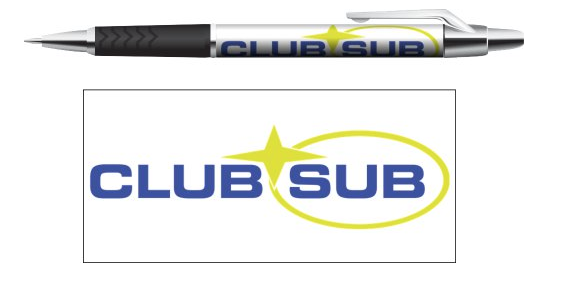-
Upcoming Events
No upcoming events found
-
Member Statistics
-
Who's Online 2 Members, 0 Anonymous, 219 Guests (See full list)
-
Current Donation Goals
-
Donate towards Forum running costsRaised $0.00
-
-
Posts
-
Ramble CAN bus Data is only what is needed for other devices to know. Eg ECU sends RPM as dash and transmission needs this data. The ECU won’t send fuel trim or timing data as nothing else needs this. There are different versions of canbus originally for higher speed, but they added fault tolerance and then flexible data rates. most Subarus run at 500Kb per second for the main canbus, newer models can be faster and also have a secondary slow fault tolerant canbus. The connections design is a single main path with short branches to each device, so everything on the bus can gets every message. This is becoming a problem as since everything shares and talks at once things get saturated and messages between lost. You see this mostly when adding OBD2 devices to 2014/16 or newer cars. There are also audio and video over canbus as options. Each message, packet or frame as it’s all just the same as any other network has an address and data. Nearly every device on the network that sends or receives data has an ID or address. Some devices have no address and passively listen eg a canbus sniffer to usb or Bluetooth often does this. This is called: normal - send, receive and acknowledge message etc no ack - send and listen, but don’t acknowledge messages received. listen only - mostly true where data is passively read and nothing sent it only applies to regular can messages. Many transceiver chips still send error state etc on boot up without any input. Different parts have different options. This isn’t much of an issue if the device starts with the ignition as 0.3 seconds of errors on a bus won’t be a problem as nothing much is happening when you turn on the ignition. Once running starting devices is not as ideal and starting a few is sequence could though unlike cause fault codes. The cost increase can be USD$1 per chip to support true passive listen only compare to the older chips. Physically similar to balanced audio it runs on a pair or wires with one the signal and the other the same signal inverted. The wire are twisted around each other the same as balanced audio so any external electrical interference or noise gets applied to both wires at the same time and intensity as possible. At the other end the inverted signal is flipped back to normal and added to the signal. This doubles the signal, but any noise is mostly cancelled out. Really the inverted signal is still positive but the zero point is 2.5v and signal is +-1v OBD2 Is often send over canbus in the same way as other messages just that they have a set ID they should be and a set ID to send messages to, eg ECU. Depending on the car it can go over the other K or L lines on the diagnostic port. This isn’t passive the OBD2 device requests data, firstly it should ask what the ECU supports eg timing, fuel trim etc etc. Then it can request some or all of that data. Many aftermarket devices spam this request as fast as they can up to the limit of I think 100 times per second. The data supported is a standard agreed list and only part of the data the ecu etc may have. To get all the data Now this is allowed and in spec, but if you add more that one ODB2 device eg a gauge or scanner along with say a stereo that also shows data you can overload the canbus which will then give you random fault codes and make life hard. Chasing these faults will cost you a lot as unless the tech is looking for OBD2 stereo and multiple gauges etc they will replace expensive modules trying to eliminate the fault. SSM Subaru’s own protocol for communication over whatever bus is in the car. Newer cars it’s over canbus, older over K or L lines. It has access to data from most bigger devices eg ECU, abs, body module etc, where OBD2 standards don’t apply. Eg eyesight or radar etc. This can also program devices with new codes eg keys, or unlock features like cruise control in the ecu. The benefit other than key coding is most data the device/module has can be requested. You may what per injector trimming or pulse time for an injector details not in OBD2. Maybe even the temperature or load on the processor in the module, whatever Subaru wanted to add or know for diagnostics or testing is there. K and L lines These are basically serial ports over a single wire commonly called LIN. They are slow and old but can be very useful. Depending on the car a standard serial port wired for both send and receive to the same wire can send data. Just don’t expect a modern laptop or USB converter handle the voltage. Serial ports for PC is 25v but mostly it is 5v with modern devices. Both OBD2 and SSM can use this bus for communications. Gateways and filters Newer cars don’t allow the diagnostic port to connect directly to the ecu or other modules. They have a device in between that limits the rate and type of request that you can make. This mostly protects the car from damage and theft, but also limits the owner from running diagnostics and clearing codes. Eg it may allow OBD2 requests for RPM and fault codes, but block the ability to clear them, or not even allow fault codes to be read at all. These are often easy to bypass and not really an issue.
-
https://www.drivencarguide.co.nz/news/subaru-wrx-ts-spec-b-for-new-zealand-spoiler-alert/ they are catching on... & wont last long I don't think!
-
Not an STI but the exterior tS badge is tuned by STI 😄 https://www.autocar.co.nz/subaru-wrx-2-4t-ts-spec-b-has-arrived-in-all-its-manual-glory/
-
Did you ever get the reverse camera to work? I'm doing this same install currently and have everything except the camera working. I got a factory camera retention cable that changes it to rca, but am still getting no signal. It's driving me crazy. Apologies for reopening a dead thread.
-
I wouldn't use anything petroleum based, but perhaps something more like sil-glyde.
-
-
Latest Products
-
Popular Contributors
-
Forum Statistics
-
Total Topics41k
-
Total Posts574.3k
-





